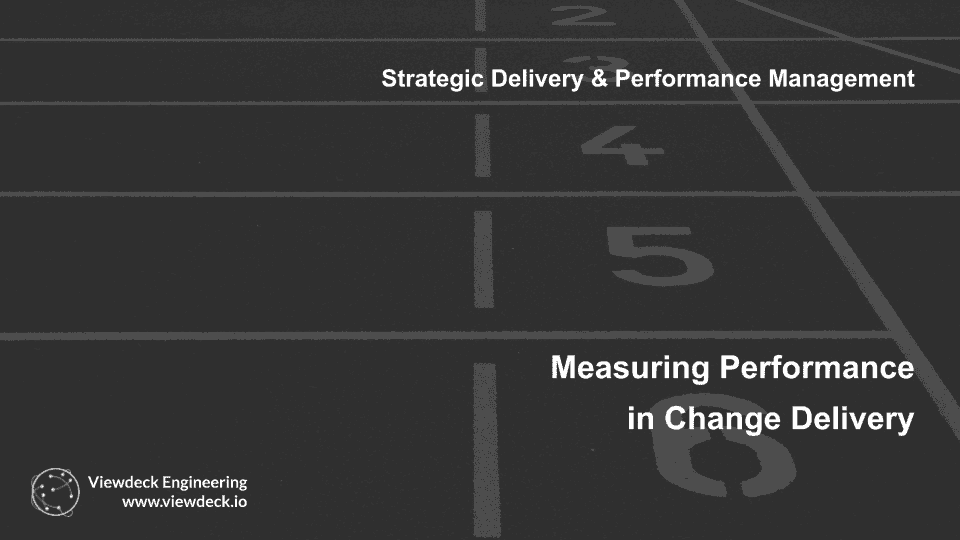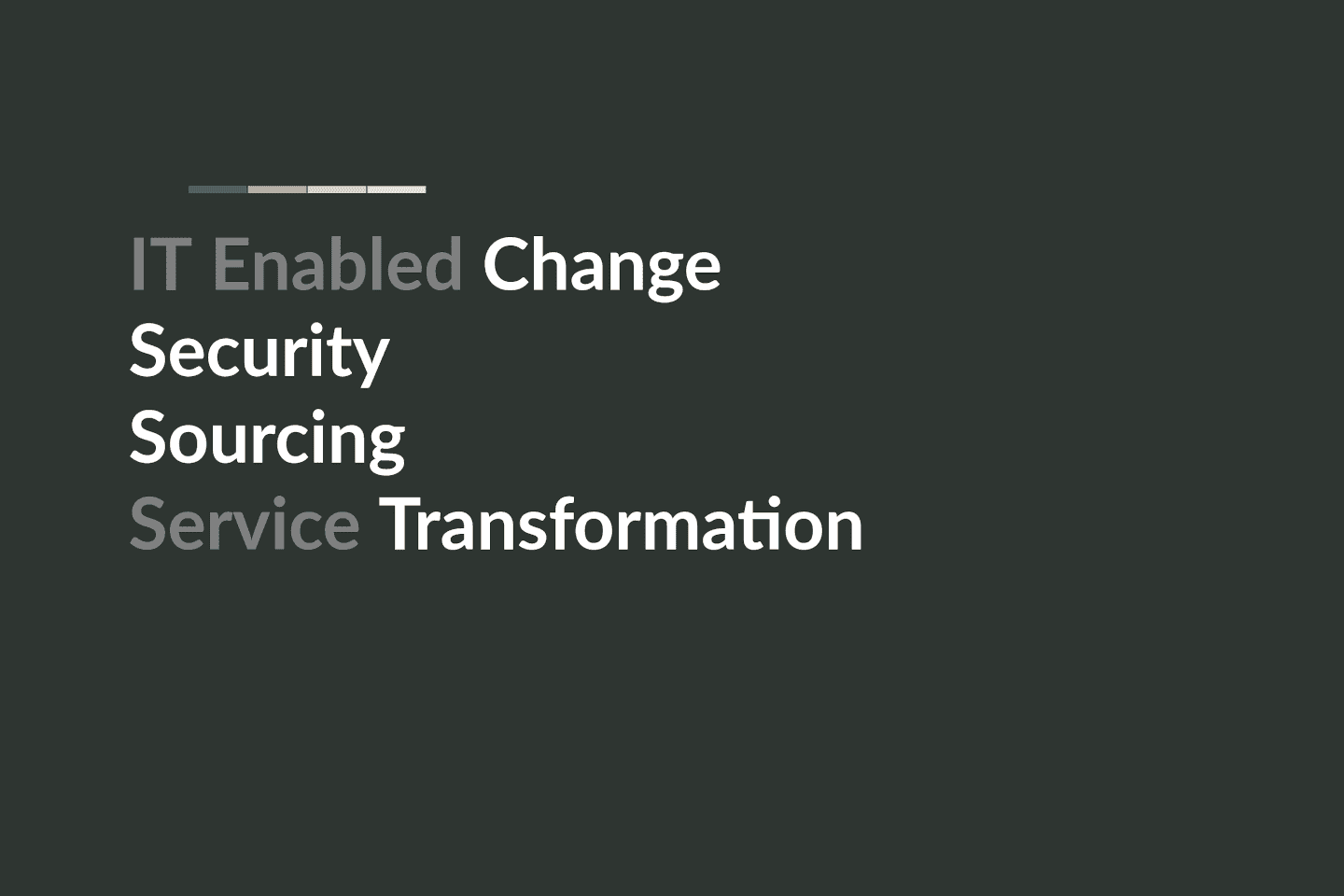Complying with the Data Protection Act
Service, Cyber, training, Compliance all play an important part in ensuring you are meeting your DPA obligations.
The Data Protection Act (DPA) in the UK was initially passed in 1984 and was updated in 1998 to strengthen data protection for the public. The DPA is a law that protects personal information and requires organisations to process it fairly, lawfully, and transparently. The law also gives individuals the right to access their own personal data and have it corrected if necessary. The UK's Data Protection Act has had a large impact on data security practices in the country and has since been adopted as part of the EU's General Data Protection Regulation.
Background
The Data Protection Act 2018 (DPA 2018) is the UK's main data protection legislation. It replaces the Data Protection Act 1998, and updates the law to reflect changes in technology and the way personal data is collected and processed. Complying with the DPA 2018 brings a number of benefits for organisations that process personal information.
-
Increased trust and transparency: The DPA 2018 sets out clear principles for processing data, which must be followed by organisations. This increases transparency, as individuals know how their data will be used, and they can trust that it will be processed securely and responsibly. This also helps to build customer trust in an organisation, as customers are more likely to use services from companies that can demonstrate good data protection practices.
-
Compliance with GDPR: The DPA 2018 is closely aligned with the General Data Protection Regulation (GDPR), which gives individuals more rights over their personal data and places greater responsibilities on organisations to protect it. By complying with the DPA 2018, organisations demonstrate their commitment to meeting their obligations under the GDPR too, helping them to avoid costly fines or other sanctions.
-
Improved Security: The security of personal data is a top priority under the DPA 2018, meaning organisations must take steps to ensure any information they collect is kept secure at all times. This includes implementing appropriate technical measures such as encryption and access controls, as well as regular monitoring of systems for signs of any unauthorised access or misuse of data. When implemented correctly, these measures can help reduce the risk of a data breach or other security incident, protecting not only customers but also the organisation itself from potential reputational damage or financial losses.
-
Streamlined Processes: One of the key requirements of the DPA 2018 is that organisations must have a lawful basis for collecting and processing personal information, such as consent from an individual or a legitimate interest in doing so. Having clear processes in place for obtaining this consent makes it easier for an organisation to ensure its activities are compliant with the law, as well as streamlining its own internal processes by having fewer forms or procedures to follow when dealing with customer data.
Does the Data Protection Act apply to your Organisation ?
The Data Protection Act (DPA) is a law designed to protect the privacy of individuals by controlling how their personal data is collected and used. To determine whether your organisation is required to comply with the DPA, you need to consider the type and amount of personal data you collect and process.
If you are processing or storing any personal data, such as names, addresses, dates of birth, or other information that can be linked to an individual, then you must comply with the DPA. It’s important to note that the definition of “personal data” is broad and includes any information that could be used to identify a person. This includes online identifiers such as IP addresses and email addresses.
You should also assess the size and scope of your data processing operations. If you are collecting and using large amounts of personal data for commercial purposes, then you must comply with the DPA. On the other hand, if your organisation only collects a limited amount of information for non-commercial activities such as research or education, then it may not need to comply with the DPA.
Finally, it’s important to consider the sensitivity of the data you are collecting and processing. The DPA imposes additional requirements for organisations that process sensitive personal data, such as information about an individual’s health or racial or ethnic origin. Therefore, if your organisation handles this type of data then it must be compliant with the DPA.
In Summary:-
- Determine if the business collects or holds personal data.
- Identify if any of the personal data is used to make decisions about individuals, or shared with other organisations.
- Assess whether the business is located in the EU, or processes data belonging to EU citizens.
- Consider if the business is a public authority, or provides services to public authorities.
- Determine if the business processes sensitive personal data, such as health records or criminal convictions.
- Ascertain if the business transfers personal data to countries outside of the EU and whether those countries have adequate levels of data protection legislation.
Evaluating whether your organisation needs to comply with the Data Protection Act requires careful consideration of the type, amount and sensitivity of personal data collected by your organisation. If in doubt, it is best to seek professional advice from a legal expert who specialises in data protection law.
Registering with the ICO
The ICO (Information Commissioner’s Office) is the UK's independent regulator for data protection and information rights. Any organisations that processes personal data must register with the ICO, as they are responsible for upholding information rights in the public interest, promoting openness by public bodies and data privacy for individuals. Registration with the ICO demonstrates a commitment to data protection and compliance with the Data Protection Act 2018 and General Data Protection Regulation (GDPR).
- You must be a UK-based data controller or processor;
- You must process personal data in the course of carrying out your activities;
- You must provide details of your processing activities to the ICO;
- You must clearly explain how you comply with the Data Protection Act (DPA) 2018 and other relevant legislation;
- You must pay the applicable fee;
- You must provide contact information for your Data Protection Officer (DPO) or responsible person; and
- You must adhere to the eight data protection principles set out in the DPA 2018.
The Eight Data Protection Principles
The Data Protection Act 2018 (DPA2018) sets out the principles for companies to follow to ensure the protection of personal data. The principles include ensuring that data is processed fairly and lawfully, that it is collected only for specific, explicit and legitimate purposes, that it is adequate, relevant and limited to what is necessary, that it is accurate and kept up to date, that it is not kept for longer than necessary, and that appropriate security measures are in place. Companies must also ensure that individuals are aware of their rights in relation to their personal data, as well as what data is being processed and why. Finally, companies must ensure they have procedures in place to handle data subject access requests.
-
Lawfulness, fairness and transparency: Companies must process personal data in a lawful, fair and transparent manner.
-
Purpose limitation: Companies must collect and process personal data only for specified, explicit and legitimate purposes.
-
Data Minimisation: Companies should not collect or retain more data than is necessary for the purpose of processing.
-
Accuracy: Companies must keep personal data accurate and up to date, taking all reasonable steps to erase or correct inaccurate or incomplete data.
-
Storage limitation: Companies should not store personal data longer than is necessary for the purpose of processing.
-
Integrity and confidentiality: Companies must take appropriate technical and organisational measures to ensure that personal data is kept secure, confidential and not subject to unauthorised access or disclosure.
-
Accountability: Companies are responsible for compliance with the DPA 2018 principles, meaning they must demonstrate effective implementation of measures to ensure compliance with the principles.
-
Rights of individuals: Individuals have certain rights under the DPA 2018 in relation to their personal data, including the right to access, rectify, erase, restrict and/or object to processing of their personal data by companies.
The key activities needed to meet DPA 2018 requirements
The following list outlines the key steps/activities that are required by companies managing personal information, in order to comply with DPA 2018.
-
Implement a data protection policy: Create a written data protection policy that outlines the company’s approach to protecting personal data. This should include information about how data is collected and stored, how long it will be kept for, and what security measures are in place to protect it.
-
Carry out a data protection impact assessment: Carry out an impact assessment to identify any areas where personal data processing is likely to result in a high risk to the rights and freedoms of individuals. This should consider the nature, scope, context and purposes of the processing, and assess the associated risks.
-
Appoint a Data Protection Officer (DPO): Appoint someone within your organisation with responsibility for overseeing data protection compliance and monitoring its performance. This role must be independent from other positions within the company.
-
Ensure staff understand their obligations: Provide training on data protection obligations and ensure everyone working with personal data understands their responsibilities when handling such information.
-
Ensure you have valid consent for processing: Make sure you have valid consent from individuals before collecting or processing any of their personal data. Consent should be informed, freely given, specific and unambiguous, with clear records kept of when and how it was obtained.
-
Update privacy notices: Review existing privacy notices to ensure they meet GDPR requirements, including providing enough information so that individuals can understand what is happening to their personal data.
-
Implement technical measures: Put in place appropriate technical measures to protect against unauthorised or unlawful processing of personal data and against accidental loss or destruction of, or damage to, personal data. This includes encryption where appropriate and regular backups of all systems that store personal information.
-
Respond to subject access requests: Make sure you have processes in place for dealing with subject access requests (SARs) from individuals who want to know what information you hold about them, as well as procedures for responding promptly and accurately to such requests within the required timescale (usually one month).
-
Report any security breaches: Ensure you have systems in place for detecting, investigating and reporting any suspected security breaches relating to personal data as soon as possible after becoming aware of them – usually within 72 hours – as required by law under GDPR Article 33(1).
In the following section we will examine each of these key activities/procedures and identify the key tasks/outputs needed to comply.
1. Develop your Data Protection Policy
The Data Protection Policy is a set of rules and procedures designed to ensure the security and privacy of personal data. It outlines how an organisation collects, stores, uses, shares and protects the personal data of its customers, employees or other individuals. The policy should also outline the responsibilities of both parties in relation to the data and any consequences for failing to comply with the policy.
- Research existing data protection regulations and best practices: Before writing a data protection policy, it is important to understand the legal requirements that apply to your company. Research existing data protection regulations such as GDPR or CCPA, or industry standards like ISO 27001.
- Gather input from stakeholders: Once you are familiar with the applicable laws and standards, gather input from stakeholders across your organisation. This will help you understand how different departments use and store customer data, and identify potential risks that need to be addressed in the policy.
- Outline the data protection policy: Outline the policy by identifying what types of customer data will be collected, how it will be used, stored, and secured, who has access to it, and how customers can request access to their own data.
- Involve legal: Involve legal counsel in reviewing the policy to ensure it meets all applicable laws and regulations.
- Finalize and distribute the policy: Once you have a final draft of the policy, distribute it to all employees within your organization for review and comment. After making any necessary revisions, implement the policy across all departments and ensure compliance.
The following list provides an outline/overview of what should be included within a 'standard' Data Protection Policy.
- Introduction: A brief overview of the organisation's data protection policy, its purpose and scope.
- Data Protection Principles: A clear statement of the company’s commitment to protecting personal data and complying with relevant data protection legislation.
- Collection of Personal Data: Details about how and why personal data is collected, including consent forms, if applicable.
- Use of Personal Data: Information on how personal data is used by the company and any third parties it works with.
- Security of Personal Data: Measures taken to protect personal data from unauthorised access or alteration.
- Access to Personal Data: How individuals can access their own personal data held by the company and make corrections if necessary.
- Retention of Personal Data: How long personal data is stored and when it is deleted or destroyed.
- Transfer of Personal Data: Information on how the company manages the transfer of personal data across borders, if applicable.
- Rights of Individuals: Outline of individuals’ rights under relevant data protection laws, such as the right to be forgotten or request a copy of their data (known as a Subject Access Request).
- Enforcement: Explanation of how any errors or breaches in the policy are addressed and rectified.
- Contact Information: Contact details for further information about the policy or to report any concerns about its implementation or compliance with relevant laws.
2. Data Protection Impact Assessment
The Data Protection Impact Assessment (DPIA) is a process used to identify and minimise the data protection risks . It is It is essential part of compliance where organisations collect, store, process, or use personal data .
- Identify data protection risks: Identify all potential data protection risks associated with the project or activity. This includes any technical, organisational, legal, or physical risks that may arise from processing personal data.
- Identify asset ownership: Identify the assets that your organisation owns, including any personal data, and the sources from which it was obtained. This could include customer databases, marketing information, employee records, and other sensitive data.
- Identify potential risks: Identify any potential risks associated with those assets. This could include the risk of a data breach due to weak security measures; potential misuse of data by employees or third parties; or unauthorised access to sensitive information.
- Assess security measures: Assess the current security measures in place to protect the assets and reduce the risks associated with them. This could include reviewing existing policies and procedures as well as conducting an audit of access controls for each asset.
- Evaluate privacy practices: Review and evaluate existing privacy practices to ensure that they are compliant with all applicable laws and regulations. This could involve assessing how personal data is collected, stored, used and shared; how requests for access or correction are handled; and how individuals can opt-out of certain uses of their data.
- Assess potential impact: Assess the potential impact of a data breach or misuse on your organisation’s reputation and financial well-being. This includes considering the cost of any fines or penalties that may result from a breach as well as any reputational damage that may occur due to negative publicity.
- Assess data protection risks: Assess risks have been identified, in terms of their likelihood and severity in order to determine which ones pose the greatest risk.
- Assess the likelihood and severity of each identified risk by assigning a score and classifying it as low, medium or high risk.
- Rank the identified risks according to their Likelihood and Impact to determine priority. High-risk issues should be addressed first.
- Develop measures to mitigate identified risks: Develop measures in order to mitigate the risks.
- Countermeasures may include implementing technical controls such as encryption or authentication protocols, or instituting organizational procedures such as employee training or policies related to data handling.
- implemented the countermeasures in order for them to be effective. This may involve installation of hardware and software solutions, deployment of new policies and procedures, or other measures as needed.
3. Appoint a Data Protection Officer (DPO)
A Data Protection Officer (DPO) is an expert in data protection laws and regulations, responsible for ensuring that a company properly processes and stores personal data.
The criteria for a DPO include:
- Technical knowledge of data protection principles, rules, regulations and data protection technologies;
- Knowledge of the relevant industry sector;
- An understanding of the data processing operations carried out by the company; and
- The ability to communicate effectively with staff members and other stakeholders.
The responsibilities of a DPO include:
- Monitoring compliance with data protection laws, such as the General Data Protection Regulation (GDPR);
- Ensuring that the company's data protection policies are up to date;
- Identifying any areas where there may be risks to personal data;
- Advising on and managing any issues related to personal data; and
- Liaising with relevant regulatory bodies.
The process of appointing a DPO involves selecting an individual who meets the criteria outlined above and is able to fulfil the required responsibilities. The individual must then be formally appointed by the company's board or senior management team. It is important to ensure that the DPO is independent from those making decisions about how personal data is processed, in order to maintain impartiality.
4. DPA Training
The Data Protection Act requires organisations to provide training and awareness of their data protection obligations. This includes providing information on their handling of personal data, the rights of individuals, data security measures and any other relevant topics. Organizations must also ensure that employees have the necessary knowledge and understanding to comply with the Data Protection Act.
- Identify the Training Requirements: Identify the specific training requirements by analysing the organisation's data processing activities, the type of data collected and how it is used, as well as any applicable laws or regulations related to data protection.
- Define Training Goals and Objectives: Define clear goals and objectives for the training program so that employees understand what they are expected to learn and be able to apply their knowledge effectively. These goals should include understanding the basic principles of data protection, implementing appropriate security measures, and understanding responsibilities related to data processing activities.
- Develop Curriculum: Develop a curriculum that meets the training goals and objectives. This can include classroom instruction, online learning modules, or a combination of both. The curriculum should include topics such as privacy law and regulation, data security techniques, and personal data handling procedures.
- Deliver Training: Plan for how it will be delivered to employees, and the content needed for those interactions. Depending on the size of the organization and its resources, this could take the form of in-person workshops, Info-graphics, briefing notes, email campaigns or online courses. It is important to ensure that all staff receive appropriate instruction on how to handle personal data in accordance with applicable laws and regulations.
- Monitor Results: Monitor results from the training programme to ensure it is meeting its intended purpose and providing employees with the necessary skills for complying with data protection laws and regulations. This could involve conducting surveys or interviews post-training or performing regular audits of employee behaviour when handling personal data.
5. Ensuring Valid Consent for Processing
Valid Consent is a principle of the Data Protection Act (DPA) which states that personal data must be processed fairly and lawfully. This means that when collecting or using individuals’ personal data, organisations must have the individual's explicit consent and the consent must be given freely and without coercion. Additionally, the individual must understand what they are consenting to and be aware of their right to withdraw their consent at any time. Organisations should keep records of how they obtained consent.
-
Ensure that any information about the data processing activity is clear and concise, so that all participants can understand what type of data will be collected, how it will be used, and for how long it will be stored.
-
Make sure that consent is given freely and without any pressure to participate in the data processing activity.
-
Provide a way for participants to withdraw their consent at any time and make it easy for them to do so.
-
Ensure that participants understand how their personal data will be used and how it will be kept secure once collected.
-
Keep records of consent on file, including details of when and how consent was given.
There are 4 ways that consent can be provided;-
- Explicit Consent: This is the most direct and explicit way of obtaining consent from individuals for processing their data. It involves providing individuals with clear and detailed information about what data will be collected, how it will be used, who it will be shared with, and obtaining an explicit confirmation that they are happy for the data to be processed.
- Implicit Consent: In certain situations, consent may be given implicitly. This is when individuals may not have actively chosen to give their consent but it can be inferred from their behaviour or the context of the situation. For example, if a customer visits a website and fills out a form, it can be assumed that they have given their consent for their data to be processed in order to provide them with the service they requested.
- Opt-in Consent: This is when individuals are asked to actively choose to opt-in to giving their consent for their data to be processed. For example, tick boxes on websites or forms which need to explicitly be ticked by the individual in order for them to give their permission for processing of their data.
- Opt-out Consent: This is similar to opt-in consent but instead individuals are asked to actively choose not to give their consent for processing of their data rather than actively choosing to do so. For example, an email newsletter subscription form which includes a box that needs to be unticked in order not to give permission for data processing.
You must not use pre-ticked boxes or other methods of implied consent, as this does not constitute valid consent under the Data Protection Act 2018 (DPA 2018).
6. Privacy notices
Privacy notices are statements or documents that explain how an organisation collects, uses, stores and shares personal information, in accordance with the Data Protection Act. They provide individuals with information about how their data is being used, including details of any third party organisations with whom the data is shared. They also inform individuals of their rights to access, rectify or delete their personal data.
The key steps in creating a privacy notice are:-
- Understand the data you are collecting: Identify what type of data you are collecting, how long you need to retain it for, and how it will be used.
- Draft your Privacy Notice: Describe the data you’re collecting, how it will be used, and what rights individuals have with regards to their data. Make sure your Privacy Notice is easy to understand and written in plain language.
- Review your Privacy Notice: Have someone else review your Privacy Notice to ensure it complies with all applicable laws and regulations.
- Publish your Privacy Notice: Post your Privacy Notice on your website or app, or make sure it is included in all communications where personal data is collected.
- Amend as needed: As regulations change or as new features are added, you’ll need to amend your Privacy Notice accordingly. Keep an eye on applicable laws and make sure to update the notice when necessary.
A simple example Privacy Notice.
- We are committed to protecting the privacy and security of your personal data. We comply with applicable data protection law in the UK, including the Data Protection Act 2018.
- We collect and use your personal data only where we have a legitimate interest or legal basis to do so. This may include, for example, responding to requests for services, processing customer orders, administering accounts and other related activities.
- The personal data that we collect may include name, address, email address and telephone number. It may also include financial information such as bank account details or payment card details if you choose to pay by card.
- We will never share your personal data with any third parties without your prior consent unless required to do so by law or in order to provide you with a service you have requested from us.
- We will take all reasonable steps to ensure that the personal data we collect is kept secure and protected against unauthorised access or disclosure.
- You have the right to access your personal data that we hold about you at any time and make changes or corrections where appropriate. Please contact us if you would like further information about this or if you would like to exercise your rights under the Data Protection Act 2018.
- We regularly review our Privacy Notice and will update it as necessary when new legislation comes into force or when there is a change in our practices relating to the collection and use of your personal data.
7. Implement technical measures
The Technical controls required to support DPA obligations will overlap and relate closely to those outlined in your wider Security obligations. Fundamentally we are interested in securing Data 'In Motion', 'In Use' and 'At Rest'.
Following an ISO27k regime, DPA obligations relate to the following technical and administrative controls
- Access Control: Controls the access of individuals to systems, networks and data
- Cryptography: Protects personal data from unauthorised access with encryption techniques.
- Physical and Environmental Security: Establishes physical security safeguards to ensure the secure handling of personal data stored on physical media or equipment.
- Asset Management: Ensures that all systems and data related to DPA are properly managed, tracked and secured.
- Organization of Information Security: Establishes policies and procedures to protect data subject rights.
- Incident Management: Establishes procedures for responding quickly and effectively to any incidents involving the misuse or unauthorised access of personal data subject to DPA protection requirements.
If following a Cyber Essentials/NCSC approach to governance, the following controls come within scope:-
- Secure Configuration – This control ensures that all software and hardware is configured to industry best practices and is kept up to date. This helps to reduce the risk of data being compromised, as it reduces the attack surface available to malicious actors.
- Boundary Firewalls and Internet Gateways – Boundary firewalls and internet gateways help protect data from unauthorized access by controlling and monitoring traffic flow into and out of a network.
- Access Control – Access control ensures that only authorized individuals have access to sensitive data, which helps protect against unauthorised access or use of the data.
- Malware Protection – Malware protection helps prevent malicious software from gaining access to sensitive data or systems, which can result in data corruption or theft.
The controls needed will depend on the Risks identified, the existing (other) controls, and the exposure to the organisation. The following summary provides a suitable aid, to help frame the scope and mitigation that are likely to be needed to meet the risks.
Data at Rest:
-
Encryption: Data should be encrypted when not in use, so that any unauthorised access to the data is prevented.
-
Access Control: Access to data should be restricted to only authorised personnel, and access should be monitored closely.
-
Backup and Disaster Recovery Plan: A robust backup and disaster recovery plan should be in place to ensure data integrity in case of a system failure.
-
Data Storage Policies: Data storage policies should be implemented in order to ensure that data is stored securely and accessed only by authorized personnel.
Data in Transit:
- Encryption: All data in transit should be encrypted to prevent unauthorised access.
- Secure Network Connections: All network connections should use secure protocols such as TLS/SSL to ensure that the data is protected while in transit.
- Authentication: Authentication methods such as two-factor authentication or biometrics should be used to ensure that only authorized users can access the data while in transit.
- Data Leakage Prevention (DLP): DLP solutions can be implemented to detect and prevent any unauthorised access of data while in transit.
Data in Use:
- Access Control: Access control mechanisms such as role-based access control (RBAC) should be used to ensure that only authorised users can access the data while it is being used.
- Audit Logging: Audit logging solutions should be implemented to monitor user activities and track any suspicious activity related to the usage of data while it is being used by an application or user.
- Security Monitoring: Security monitoring solutions such as an intrusion detection system (IDS) or a security information and event management (SIEM) solution should be implemented to detect anomalous behavior related to the usage of data while it is being used by an application or user.
8. Respond to subject access requests
Under the Data Protection Act 2018, individuals have the right to make a request for their personal data directly from a data controller. This is known as a Subject Access Request (SAR).
A data controller must respond to an SAR within one month of receiving it, and they must provide the individual with all relevant information held about them. This includes:
• Details of any personal data the organisation holds on them; • The purpose of collecting and processing of their personal data; • Who the organisation has shared their personal data with; • How long they will keep the personal data; • Their right to rectification, erasure or restriction of processing; and • Details of any automated decision-making related to their personal data.
Organisations must also take reasonable steps to verify the identity of the individual making the request. They can charge a ‘reasonable fee’ if the request is manifestly unfounded or excessive, however this fee cannot be used to deter individuals from making requests.
The key activities needed to support this activity include
- Develop a Subject Access Request (SAR) policy and procedure which outlines the process of how to respond to requests for data. This should include information on what data is collected, how it is stored, who has access to it and how long it is retained.
- Have an appropriate system in place to keep track of all SARs received and the responses provided.
- Respond to the request within one month of receipt, unless you can demonstrate that the request is manifestly unfounded or excessive in which case you may extend this period by up to two further months.
- Provide a response in writing unless otherwise requested by the individual, including an explanation of why their request was denied if applicable.
- Provide a copy of the personal data free of charge; however you are allowed to charge a ‘reasonable fee’ if the request is manifestly unfounded or excessive.
- Ensure all personal data provided in response to a SAR is accurate and up-to-date at the time of disclosure.
- If requested, provide a copy in an electronic format which allows for further use and reuse by the individual requesting it.
- Provide individuals with an explanation as to why their request was denied if applicable and inform them that they have the right to complain to their supervisory authority or seek judicial remedy if dissatisfied with your response.
9 Report any Security Breaches
Under the Data Protection Act 2018, organisations have a legal obligation to report any security breaches that could lead to the accidental or unlawful destruction, loss, alteration, unauthorised disclosure of, or access to personal data.
The process for reporting security breaches is as follows:
-
Assess the severity of the breach. If the breach is minor, it may be sufficient to inform individuals who have been affected and take steps to prevent similar incidents in the future. However, if the breach is more serious, you must notify the relevant supervisory authority immediately. A minor breach of the Data Protection Act 2018 (DPA 2018) may include: • Failing to comply with a subject access request within the allotted time frame • Processing personal data without appropriate consent from the data subject • Failing to provide an appropriate privacy notice when collecting personal data • Failing to implement appropriate security measures to protect personal data against unauthorised access or accidental loss. A major breach of the Data Protection Act 2018 (DPA 2018) may include: • Selling or sharing data with other organizations without the explicit consent of the data subjects • Processing sensitive data without explicit consent from the data subjects • Failing to report a breach within 72 hours of its discovery • Unlawful disclosure of personal data due to inadequate security measures.
-
Notify the Information Commissioner’s Office (ICO) as soon as practicable following a breach. You must provide details on how and when it happened, what data was affected and what steps you are taking to limit any potential damage or distress caused by the data breach.
You can do this by visiting the ICO website and completing the online form on their website. Alternatively, you can contact the ICO directly via email or phone. When making your notification, include as much detail as possible about the alleged breach, including the date it occurred and any other relevant information.
-
Notify those individuals who may have been affected by the breach as soon as possible after becoming aware of it. You must ensure that these individuals receive clear and concise information about what has happened and what steps they can take to protect themselves from potential harm caused by the breach.
-
Take all necessary steps to secure any personal data that has been breached and put in place appropriate measures to prevent similar incidents in future.
-
Provide regular updates to the ICO regarding your investigation into and response to the data breach until it is resolved satisfactorily.
Conclusion
There are many benefits to complying with the Data Protection Act 2018 for both individuals and businesses alike. By understanding how it applies to their activities and taking steps to ensure they are following its requirements correctly, organisations can benefit from increased transparency and trust among customers, improved security measures, and streamlined internal processes that make managing customer data easier than ever before.
In Summary, to achieve compliance, organisations should ;-
1. Understand the Requirements: To become DPA 2018 compliant, organisations must understand and comply with the requirements set forth in the DPA 2018. This includes understanding the data protection principles, rights of data subjects, and other applicable regulations.
2. Assess Your Data: Organisations must assess their current data practices and procedures to identify any potential risks or gaps in compliance with the DPA 2018. This includes evaluating how data is collected, stored, managed, and shared by the organisation.
3. Establish Policies and Procedures: Once potential risks have been identified, organisations must develop policies and procedures to address them and ensure compliance with the DPA 2018. This includes establishing a process for collecting, storing, managing, and sharing data in accordance with the regulations.
4. Train Employees: Organisations must ensure that all employees are knowledgeable about the DPA 2018 and its requirements. This may include providing training on data protection principles, rights of data subjects, and other applicable regulations.
5. Monitor Compliance: Organizations must also monitor their compliance with the DPA 2018 on an ongoing basis to ensure that data is managed according to regulations. This may include conducting regular audits or reviews of policies and procedures to identify any potential risks or gaps in compliance.































